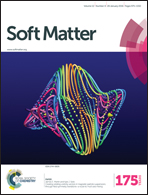Convection associated with exclusion zone formation in colloidal suspensions
Abstract
The long-range repulsion of colloids from various interfaces has been observed in a wide range of studies from different research disciplines. This so-called exclusion zone (EZ) formation occurs near surfaces such as hydrogels, polymers, or biological tissues. It was recently shown that the underlying physical mechanism leading to this long-range repulsion is a combination of ion-exchange at the interface, diffusion of ions, and diffusiophoresis of colloids in the resulting ion concentration gradients. In this paper, we show that the same ion concentration gradients that lead to exclusion zone formation also imply that diffusioosmosis near the walls of the sample cell must occur. This should lead to convective flow patterns that are directly associated with exclusion zone formation. We use multi-particle tracking to study the dynamics of particles during exclusion zone formation in detail, confirming that indeed two pronounced vortex-like convection rolls occur near the cell walls. These dramatic flow patterns persist for more than 4 hours, with the typical velocity decreasing as a function of time. We find that the flow velocity depends strongly on the surface properties of the sample cell walls, consistent with diffusioosmosis being the main physical mechanism that governs these convective flows.


 Please wait while we load your content...
Please wait while we load your content...